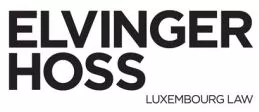- within Finance and Banking topic(s)
- in United States
- in United States
- within Antitrust/Competition Law, Technology, Litigation and Mediation & Arbitration topic(s)
- with readers working within the Banking & Credit industries
On 17 June 2025, the European Commission introduced a package of measures to enhance the EU securitisation framework, marking the first legislative initiative under the Savings and Investments Union (SIU) Strategy.
These targeted regulatory changes are designed to address shortcomings in the current securitisation framework and to strengthen the EU securitisation market. The proposals aim to remove unnecessary barriers to issuance and investment, encourage greater participation by financial institutions, and channel more investment into the real economy.
Background
The Commission was tasked with assessing all factors impeding the development of the EU securitisation market, including the prudential treatment of securitisation for banks and insurance companies, as well as transparency and due diligence requirements, while taking into account international standards.
The relaunch of EU securitisation has also been recommended by Enrico Letta and Mario Draghi in their respective reports, which highlight the need to strengthen European banks' lending capacity, deepen capital markets, build the SIU and enhance the EU's competitiveness.
Main changes to the general framework
The Commission's proposal introduces targeted amendments to the Securitisation Regulation1 to reduce operational costs for issuers and investors and to simplify due diligence and transparency requirements. These amendments are described in more detail below.
Amendments are also proposed to the Capital Requirements Regulation (CRR)2 and amendments to the Liquidity Coverage Ratio (LCR) Delegated Regulation3 have been published for consultation. In the coming weeks, draft amendments to the Solvency II Delegated Regulation4 will also be published for feedback.
Key amendments to the Securitisation Regulation
Definition of public and private securitisation. Definitions of public securitisation and private securitisation are introduced in Article 2 of the Securitisation Regulation. A public securitisation is any securitisation that meets one or more of the following criteria:
- a prospectus is drawn up for the securitisation pursuant to Article 3 of the Prospectus Regulation5;
- the securitisation is marketed with notes constituting securitisation positions admitted to trading on a Union regulated market, an MTF or an OTF;
- the securitisation is marketed to investors and the terms and conditions are not negotiable among the parties.
Accordingly, a private securitisation is one that does not meet any of the above criteria. The distinction between public and private securitisations is particularly relevant for the application of transparency requirements, as summarised further below.
Due diligence requirements for institutional investors. The proposed amendments to due diligence requirements in Article 5 of the Securitisation Regulation can be summarised as follows:
- Verification requirements on risk retention, transparency requirements and the application of sound standards in the selection and pricing of exposures (Article 5(1)) as well as compliance with the STS requirement in respect of STS securitisations (Article 5(3)(c)) are removed for investors where the sell-side party responsible for compliance is established in the Union. Such verifications shall remain applicable in cases where the sell-side is established in a third country.
- Lighter due diligence waiving verification and documentation requirements shall apply where the securitisation includes a first loss tranche that is guaranteed or held by a narrowly defined list of public entities and represents at least 15% of the nominal value of the securitised exposures (Article 5(5a)), and due diligence requirements are waived where multilateral development banks fully guarantee the securitisation position, rendering it very low risk (Article 5(4a) and (4b)).
- The risk assessment process in Article 5(3) is made more principles-based by removing the detailed list of structural features that investors must check and by clarifying in a recital that the due diligence assessment should be proportionate to the risk of the securitisation.
- Written procedures to monitor ongoing compliance are also made more principles-based by removing the detailed list of information in the second subparagraph of Article 5(4)(a). In addition, secondary market transactions are now granted an extra 15 days to document their due diligence (Article 5(4)(g)).
- The delegation of due diligence under Article 5(5) is aligned with other sectoral legislation, clarifying that delegation of tasks does not transfer the responsibility of the delegating institutional investor.
Review of transparency requirements. To reduce the reporting burden on issuers, the reporting templates in Commission Delegated Regulation (EU) 2020/1224 and Commission Implementing Regulation (EU) 2020/1225 will be reviewed. The target is to reduce required fields by at least 35%, or more where feasible, also distinguishing between mandatory and voluntary fields. This review will be conducted by the securitisation sub-committee of the ESAs Joint Committee, led by the EBA in cooperation with the other ESAs.
The reporting template for private securitisations will be subject to a dedicated and simplified reporting framework that reflects their unique characteristics, distinct from public securitisation. This template will be significantly lighter and focused solely on the needs of supervisors. To promote greater market transparency and facilitate supervision and monitoring of the private market, this dedicated template will be reported to the securitisation repositories.
Next steps
The proposals will now be considered by the European Parliament
and the Council. We encourage clients and stakeholders to review
the proposed changes to the EU securitisation framework and assess
their potential impact. Our team is closely monitoring the
legislative process and is available to provide tailored advice or
further information on any aspect of the review. Please contact us
for an in-depth discussion or with any questions regarding the new
requirements and opportunities arising from these
developments.
Footnotes
1 Regulation (EU) No 2017/2402
2 Regulation (EU) No 575/2013
3 Commission Delegated Regulation (EU) 2015/61
4 Commission Delegated Regulation (EU) 2015/35
5 Regulation (EU) 2017/1129
The content of this article is intended to provide a general guide to the subject matter. Specialist advice should be sought about your specific circumstances.




